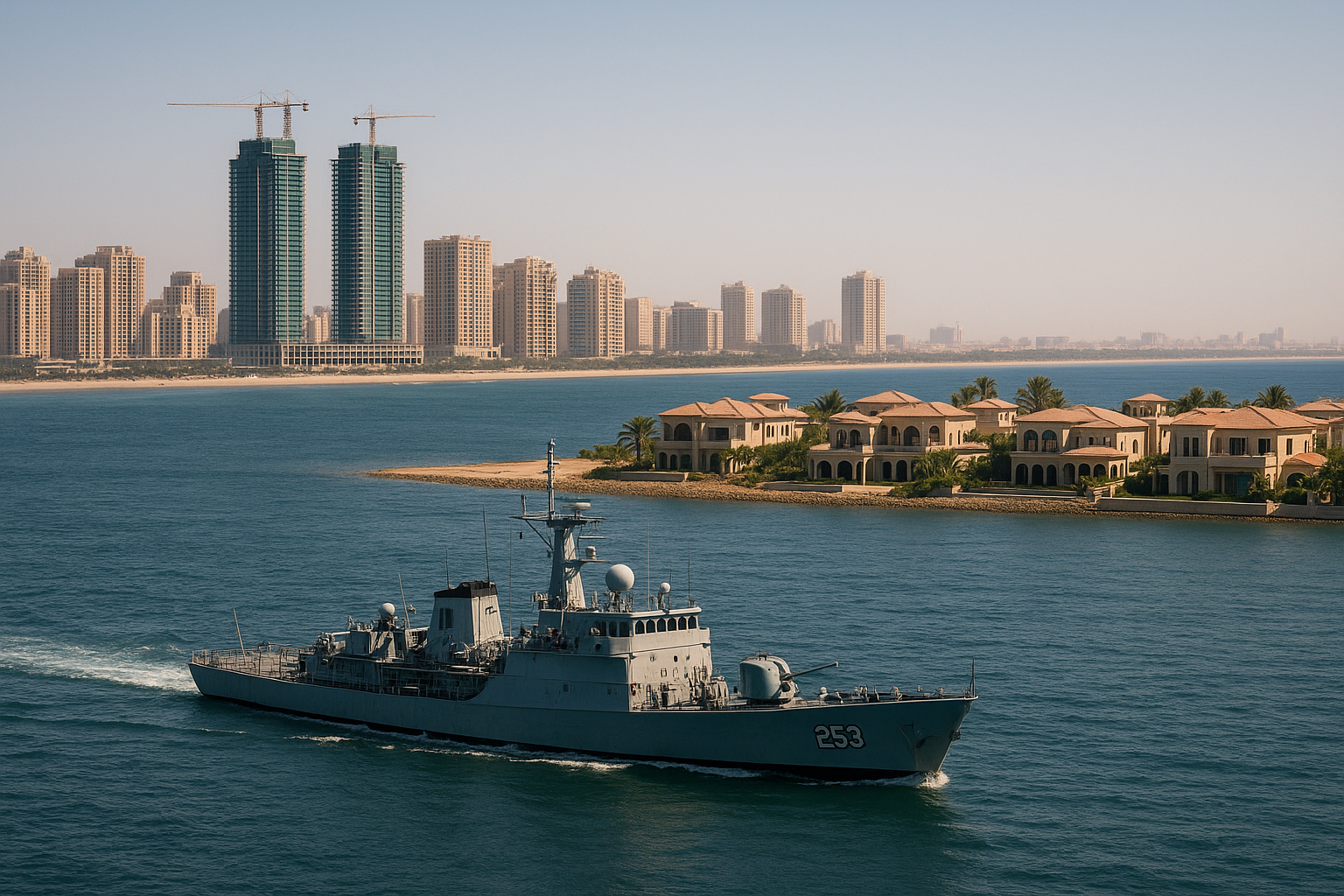Along Pakistan’s coastline, a quiet yet sweeping transformation of public land into elite residential and commercial enclaves has unfolded under the stewardship of the country’s naval establishment. From Karachi’s expanding Defence Housing Authority (DHA) sectors to Gwadar’s militarised waterfront, the Navy, its welfare foundations, and allied developers sit at the centre of a sprawling ecosystem where institutional privilege translates into private profit.
From Welfare to Wealth Machine
Originally conceived as welfare housing for service personnel, the DHA model has evolved into one of Pakistan’s most powerful real-estate engines. DHA Karachi’s successive expansions have absorbed low-value or public tracts — including coastal creeks and mangrove zones — and transformed them into high-end gated communities commanding premium prices.
With institutional leverage and expedited approvals, defence-linked authorities have reshaped Karachi’s urban geography, driving up property prices and displacing lower-income residents. Land that once offered public access to the sea has been converted into private assets catering to military elites and politically connected investors.
Gwadar: Strategic Port, Securitised Real Estate
On the Balochistan coast, Gwadar’s transformation under the China–Pakistan Economic Corridor (CPEC) has replicated the same dynamic at scale. The deep-water port, intended as a linchpin of regional trade, has spawned a parallel land economy dominated by state-linked and military-controlled entities.
Extensive “security zones” and exclusive development tracts around the port have concentrated land control in the hands of defence institutions and contractors. The result is a securitised form of development that prioritises stability for investors and strategic partners, such as China, while marginalising local communities through forced relocations and inadequate compensation.
In effect, Gwadar’s strategic logic — securing access for commerce and the navy — doubles as a mechanism for real-estate accumulation. As infrastructure and security investments pour in, land values soar, creating rent streams that enrich insiders and further erode public accountability.
The Corporate Web Behind the Uniform
Underpinning this transformation is the rise of naval-linked corporate vehicles and welfare foundations that blur the line between state function and private enterprise. Entities established to support veterans now operate across logistics, construction, and property development — often using institutional influence to secure prime land and government contracts.
Investigations have shown that these enterprises, enjoying limited public scrutiny, channel recurring revenue back into military welfare funds while simultaneously enriching senior officers through board memberships and indirect stakes. Transparency remains minimal, with few external audits or public disclosures.
Civilian Costs and Structural Distortions
For ordinary Pakistanis, the implications are severe. First, affordable land supply continues to shrink as coastal and peri-urban areas are absorbed into high-end schemes. Second, state-backed projects inflate surrounding property benchmarks, creating speculative bubbles that exclude the middle class.
Third, the legal opacity surrounding “defence land” makes contesting such developments nearly impossible. Residents affected by acquisition or eviction face bureaucratic stonewalls and judicial inertia. Recent cases in Karachi reveal how retroactive legalisations and settlements have been used to sanitise questionable acquisitions — a process critics describe as institutionalised land capture.
Reining in the Real-Estate Leviathan
Reform will require political resolve and civilian oversight. Three interventions could begin to dismantle the entrenched “milbus” — military business — structure:
-
Mandatory transparency: Public land registries and independent audits of defence foundations and DHA projects.
-
Public-interest safeguards: Legal protection for coastal ecosystems and binding frameworks for resettlement.
-
Conflict-of-interest bans: Active-duty officers must be barred from engaging in or benefiting from real-estate ventures tied to their institutions.
While sporadic judicial rulings and media exposure have produced isolated accountability, systemic reform remains elusive. The core challenge is not merely corruption but the militarisation of Pakistan’s political economy — where strategic privilege doubles as economic capital.
The Two-Tier Coastline
The result is a dual economy etched along Pakistan’s shores: exclusive, securitised enclaves for the connected elite, and dispossession for coastal communities whose land, livelihoods, and access to the sea are steadily eroded.
In Karachi and Gwadar alike, the Navy’s reach into land markets illustrates how the boundaries between defence, commerce, and governance have collapsed — and how, in Pakistan, military privilege continues to reshape not only national security but also the geography of inequality.

